Environmental Science and Engineering
Molecular pores for thought
Ultrathin porous films that can pluck out specific nanoscopic molecules could refine oil purification and drug development.

A team led by KAUST researchers has created an ultrathin porous membrane using carefully crafted molecular building blocks to improve the efficiency of oil refining and pharmaceutical manufacture. © 2020 KAUST; Anastasia Serin /en/article/1070/molecular-pores-for-thought
A team led by KAUST researchers has created an ultrathin porous membrane using carefully crafted molecular building blocks to improve the efficiency of oil refining and pharmaceutical manufacture. © 2020 KAUST; Anastasia Serin /en/article/1070/molecular-pores-for-thought
Wafer-thin membranes tailored to separate specific molecules from liquids could improve the efficiency of oil refining and pharmaceutical manufacture.
Filtering organic solvents—carbon-based liquids, such as oils and alcohols, that dissolve other substances—is crucial for petroleum, chemical and pharmaceutical companies that must consistently create the purest product.
Traditional extraction techniques, such as distillation, use vast amounts of energy, and emerging green alternatives, such as membranes, face other challenges. For instance, porous materials must withstand often highly reactive solvents while filtering out target molecules of a particular size and shape. Some very efficient membranes are available for separating salt from water in seawater desalination, but they are not as effective at separating smaller, very similar molecules in organic solvents.
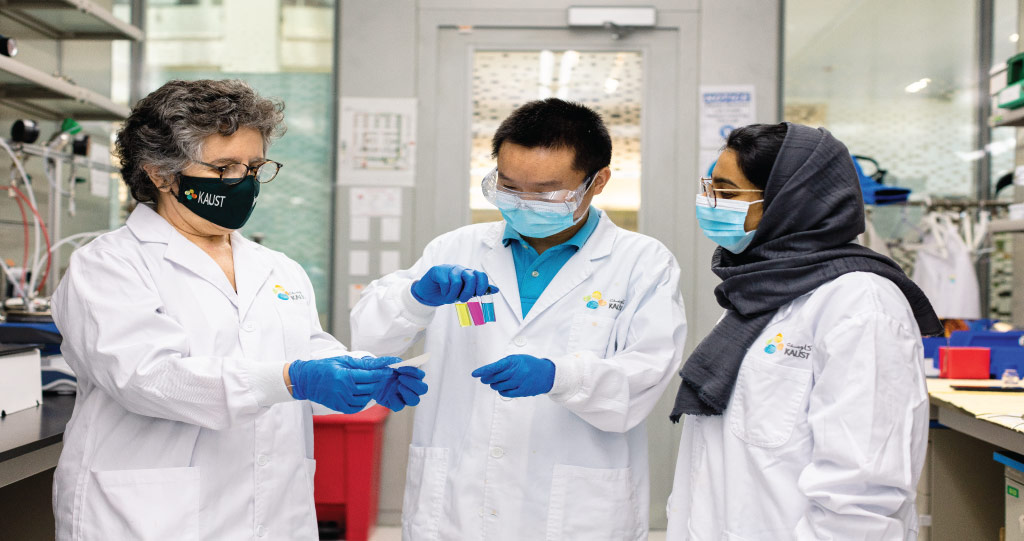
Susana Nunes (left), Tiefan Huang (center) and Mram Alyami (right) are developing more cost-effective membranes for molecular separations.
© 2020 KAUST
Two teams of KAUST researchers have created an ultrathin porous membrane using carefully crafted molecular building blocks, known as trianglamines. “You can imagine it like LEGO,” explains Suzana Nunes, professor of Chemical and Environmental Science and Engineering, “where you take preformed hollow triangles and assemble them together in a flat film.” By first defining the pore size and electric charge of these triangular molecules, they went on to create a membrane that could separate molecules of different sizes and shapes.
“For faster filtration, the film needs to be as thin as possible to avoid unnecessary resistance to the solvent passing through,”
Membrane thickness is also critical to filtering efficiency. “For faster filtration, the film needs to be as thin as possible to avoid unnecessary resistance to the solvent passing through,” says Nunes. To achieve this, they separated the two main ingredients (terephthaloyl chloride and the preformed trianglamines) into two different fluids that do not mix (oil and water, respectively), forcing the reaction to occur only at the interface where the fluids met. “We found this formed an extremely thin layer of a few nanometres,” says Tiefan Huang, the lead author, “much thinner than common commercial membranes prepared in this way.” Each film was between 3.5 and 10 nanometres, depending on how long the reaction continued.

The membranes developed by KAUST scientists did not deteriorate after 48 hours continuous use, withstood exposure to harsh substances and outperformed other membranes that they tested.
© 2020 KAUST; Ivan Gromicho
The team tested their membranes on colored dyes with similar yet distinct molecular sizes. All of their membranes filtered out at least 90 percent of the color molecules that weighed more than 450 grams per mole, far outperforming some of the other membranes they tested. “The membranes’ performance didn’t deteriorate after 48 hours of continuous filtration,” adds Huang. And they even withstood exposure to harsher substances, including acetone and methanol.
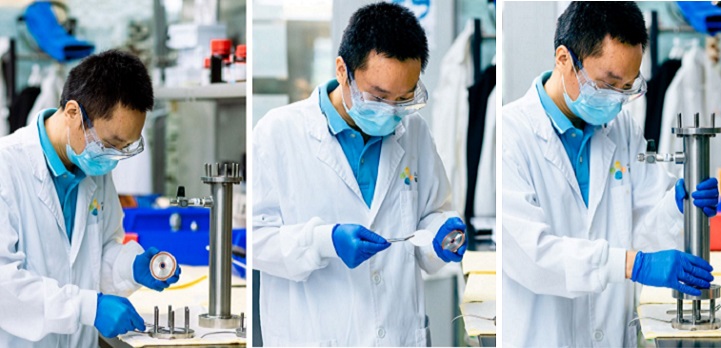
The membrane is cut to size, placed in the filtration apparatus and tested under different applied pressures.
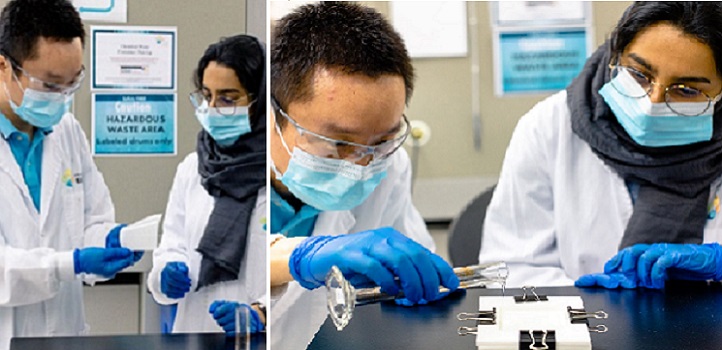
The trianglamine aqueous and terephthaloyl chloride hexane solutions are poured onto an ultrafiltration membrane to prepare the ultrathin trianglamine layer.
© 2020 KAUST; Anastasia Serin
“Molecular purification for pharmaceuticals can involve many steps,” explains Nunes. “More selective and sturdy membranes like ours can simplify the process, making it more cost effective. The machinery we used is already widely used in the membrane industry,” she adds, “so it can be easily scaled up for manufacturing.”
“This work was possible because of the collaboration with Niveen Khashab’s group,” explains Nunes. “I credit the complementarity of our groups and the unique research environment at KAUST for facilitating what I hope will be a continuing collaboration with Prof. Khashab and her team.”
The membranes in this study were tailored specifically for molecules of around 400 grams per mole. “We will next work on a portfolio of building blocks so that we can make membranes for selecting molecules of many different shapes and sizes,” says Nunes, “and ultimately help make organic solvent separation more sustainable.”
References
- Huang, T., Moosa, B.A., Hoang, P., Liu, J., Chisca, S., Zhang, G., AlYami, M., Khashab, N.M. & Nunes, S.P. Molecularly-porous ultrathin membranes for highly selective organic solvent nanofiltration. Nature Communications 11, 5882 (2020).| article
You might also like
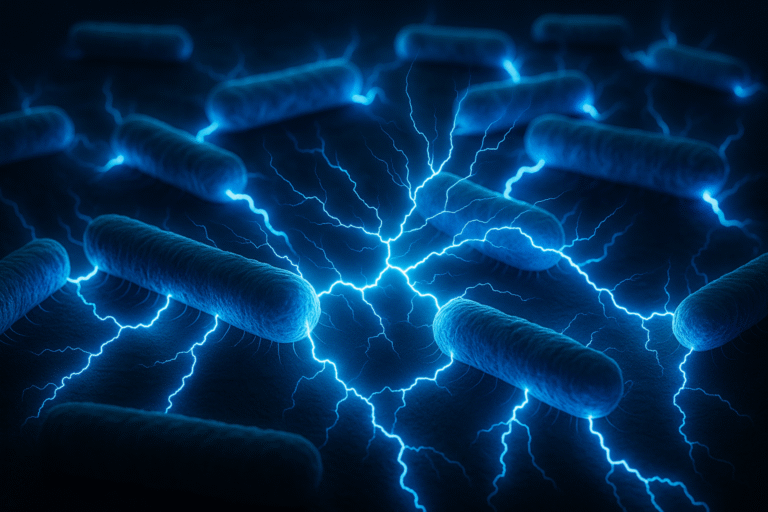
Environmental Science and Engineering
Bacteria reveal hidden powers of electricity transfer
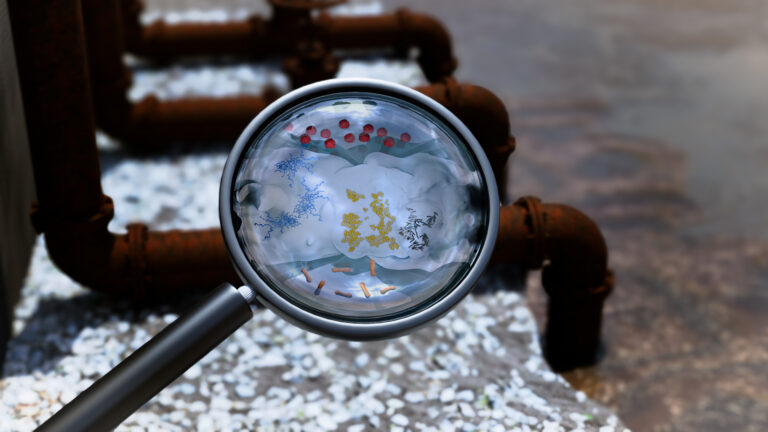
Environmental Science and Engineering
Wastewater surveillance tracks spread of antibiotic resistance

Bioscience
Super fungi survive extreme Mars-like environments

Environmental Science and Engineering
Rethinking food systems to restore degraded lands

Environmental Science and Engineering
Combat climate change by eliminating easy targets
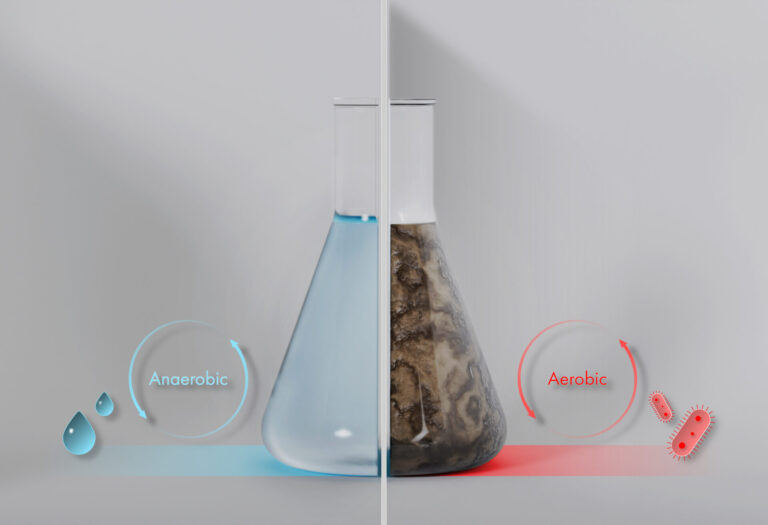
Environmental Science and Engineering
Wastewater treatment to fight the spread of antibiotic resistance

Bioscience
Digging into the world of plant-growth-promoting microbes

Bioscience




